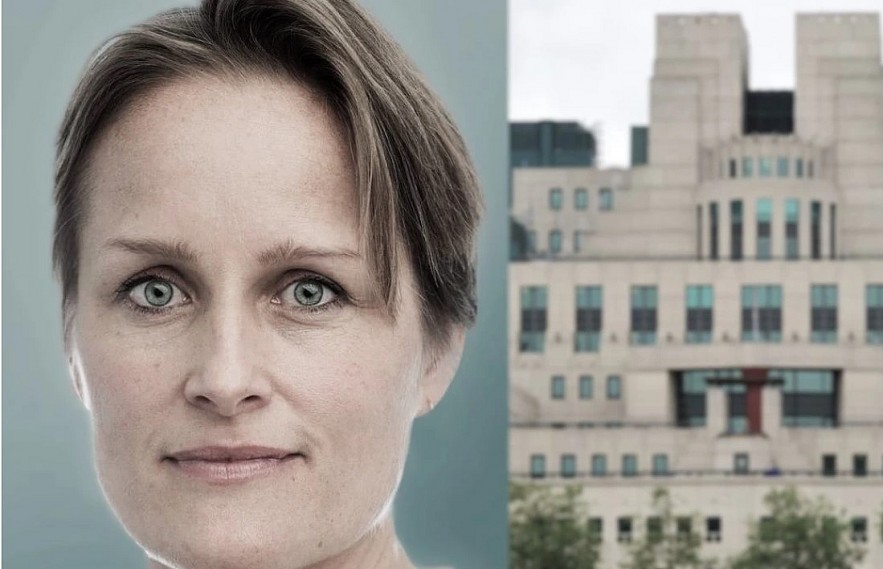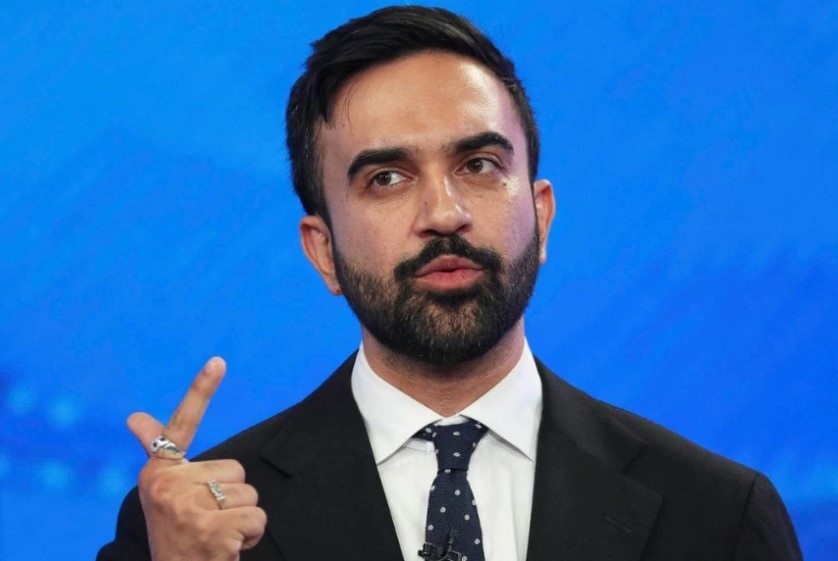Who Is Blaise Metreveli? First Female ‘C’ of MI6: Biography, Family, Education
In summary:• Born: London, 1977/78; Georgian-British ancestry • Education: Westminster School; Pembroke College, Cambridge (Anthropology); Women’s Boat Race winner • MI6/MI5 Career: Joined 1999; MI5 counterintelligence, Middle East & Europe ops; Tech & Innovation Director (2022); CMG (2024) • Historic Appointment: First female Chief of MI6 (“C”), effective 1 October 2025, succeeding Sir Richard Moore • Legacy: Breaking gender biases, moving MI6 into tech era, strengthening national security |
Her appointment marks a powerful moment for gender equality and modernization within the intelligence community. Scheduled to formally take office as “C” on 1 October 2025, Metreveli succeeds Sir Richard Moore in this prestigious role
In this in‑depth profile, we explore who Metreveli is—her background, education, career, family, and what her elevation means for MI6 and beyond.
 |
| Blaise Metreweli becomes first woman to lead MI6 as UK faces escalating threats from China, Iran and beyond |
Early Life & Family Heritage
Blaise Metreveli was born in London in 1977 or 1978, the daughter of Konstantine Metreveli, a Georgian-born radiologist in the British Army Medical Corps. Her father later chaired diagnostic radiology at the Chinese University of Hong Kong (1986–2001), authoring numerous medical publications
The surname “Metreveli”, sometimes spelled “Metreweli” or “Metreweli,” reflects her Georgian ancestry, with “Metreweli” being a German transliteration of the original Georgian. Blaise grew up alongside at least one older brother, likely benefiting from an intellectually rich environment given her father’s medical prominence.
Education & Cambridge Waters
Metreveli attended Westminster School, one of London’s most prestigious institutions, before heading to Pembroke College, Cambridge, to study social anthropology
While at Cambridge, she was actively involved in rowing and was part of the 1997 crew that won the Women’s Boat Race — a testament to her teamwork, resilience, and discipline
Entering Intelligence — MI6 & MI5
In 1999, while still at Cambridge, Blaise Metreveli began her career with MI6. Over the next decades, she rose through the ranks, serving in critical and secretive roles
Before her promotion to head MI6’s Technology & Innovation Directorate (informally known as “Q branch”), she served at MI5, the domestic intelligence agency, in counterintelligence roles focused on hostile states — a position demanding sensitivity to threats from Russia, China, Iran, and others
A Technological Vanguard: Head of “Q”
In 2022, Metreveli was appointed Director General of Technology & Innovation at MI6, colloquially MI6’s “Q” — a nod to the iconic James Bond franchise In this role, she spearheaded efforts in cyber intelligence, artificial intelligence, and digital espionage, embracing technological modernization within intelligence operations
Under her leadership, MI6 began integrating advanced AI tools, expanded its counter-surveillance capabilities, and invested in digital-first initiatives.
Her appointment to this role signaled a generational shift: for the first time, three of MI6’s four director general posts were held by women
Historic Promotion to Chief (“C”)
On 16 June 2025, Prime Minister Keir Starmer and Foreign Secretary David Lammy officially announced that Metreveli would succeed Sir Richard Moore on 1 October 2025, becoming the first female Chief of MI6 — the head of Britain’s foreign intelligence service for over 116 years
Sir Richard Moore, who began his tenure on 1 October 2020, praised her as “one of our finest minds in the field of technology”.
Why Her Appointment Matters
-
Breaking a historic gender barrier: MI6 has never before had a female Chief. Her selection aligns MI6’s top leadership with other UK intelligence agencies like MI5 and GCHQ, which previously appointed women.
-
Modernizing intelligence: With cybersecurity and AI now central to national security, Metreveli’s tech-first background is a strategic fit.
-
Diversifying Intelligence Leadership: Her rise reflects purposeful change in an agency long seen as dominated by white, Oxbridge‑educated men .
Cultural comparisons to James Bond fiction are inevitable: Metreveli, now occupying the real-world role of “M” or “C,” religiously breaks stereotypes long upheld in popular spy narratives .
Honors & Recognition
Recognizing her contributions, Metreveli was appointed a Companion of the Order of St. Michael & St. George (CMG) in 2024 for “services to British foreign policy,” while listed as Director General, Foreign, Commonwealth & Development Office.
This award reflects her deep impact on both UK intelligence and diplomatic policy.
Personal Life & Family
Though much of her life is shrouded in intelligence secrecy, public records tell us:
-
Married with children. In a 2021 interview (under a pseudonym “Director K”), she shared that her children had worked out what she did professionally
-
She maintains British nationality, with cultural ties to Georgia via her father.
-
Outside work, she’s known to remain intensely private — a hallmark of covert-service leaders — but her academic rowing and family life hint at a balanced existence.
Addressing Global Challenges
Metreveli steps into the top MI6 role during a fraught international context. UK intelligence is in high demand as threats grow from:
-
State adversaries: Russia, China, Iran — in cyber warfare, espionage, geopolitical interference.
-
Non-state actors: Terrorist networks, extremist groups.
-
Digital battlegrounds: AI, data espionage, election interference, cyber resilience.
Her deep experience in technology counters these multifaceted threats with forward-looking leadership.
Symbolic and Cultural Resonance
-
Representation & Role Modeling
The cross-section of tech‑savvy, female leadership at the top of an elite spy service sends a powerful message to MI6 staff and to society, inspiring more diverse future applicants. -
Fiction vs. Reality
In James Bond lore, “M” and “Q” have been portrayed as powerful women (e.g., Judi Dench); Metreveli embodies that fictional archetype in real life -
Institutional Modernization
Historically slow in diversity and digital adaptation, MI6 now signals renewed commitment to both. -
Intelligence Community Momentum
Following similar progress at MI5 and GCHQ, Metreveli’s rise reflects a broader trend across British national security.
Chronological Timeline
| Year | Milestone |
|---|---|
| 1977/78 | Born in London to Konstantine Metreveli |
| 1990s | Attended Westminster School; studied anthropology at Cambridge; won Women’s Boat Race (1997) |
| 1999 | Joined MI6 as an intelligence officer |
| 2010s | Senior counterintelligence roles at MI5; fluent in Arabic; operational assignments in Middle East & Europe |
| 2022 | Became Director General, Technology & Innovation (MI6’s “Q”) |
| 2024 | Awarded CMG for national security contributions |
| 16 Jun 2025 | Announced as next MI6 Chief (C); first woman to hold the role |
| 1 Oct 2025 | Will officially assume the role of Chief of SIS (MI6) |
Challenges Ahead for ‘C’ Metreveli
As she prepares for the top job, Metreveli must confront multiple pressures:
-
Cybersecurity threats: Nation-state cyberattacks, AI-driven espionage, supply-chain vulnerabilities.
-
Espionage & counter-intelligence: Russian spy networks, Chinese influence campaigns, Iranian cyber sabotage.
-
Intelligence partnerships: Deepening collaboration with Five Eyes (US, Canada, Australia, New Zealand), NATO allies, and regional intelligence services.
-
Organizational culture change: Expanding diversity and inclusion, reducing gender pay gaps, modernizing recruitment.
Final Reflection
Blaise Metreveli’s journey—from anthropology student and competitive rower at Cambridge, to MI5 operative, to heading MI6’s tech revolution, and now breaking the ultimate glass ceiling as MI6’s first female chief—reflects a seismic shift in intelligence leadership. Her appointment is a testament to resilience, intellect, vision, and represents a turning point where UK intelligence aligns tradition with innovation and inclusivity.
As “C,” her leadership will be scrutinized, celebrated, and closely watched—not just for what it means for security, but for what it signals about the future of espionage leadership in the 21st century.
What Comes Next?
-
Watch for confirmation of her first decisions as Chief, especially around AI, cyber defense, and diversity initiatives.
-
Expect collaborative intelligence strategies—especially with allies facing the same global threats.
-
Note cultural shifts in MI6 recruitment, leadership, and gender pay equity.
As intelligence faces challenges in cyber domains, geopolitical tension, and rapid tech change, Blaise Metreveli’s rise could define a new era in espionage and security for Britain and its allies.























